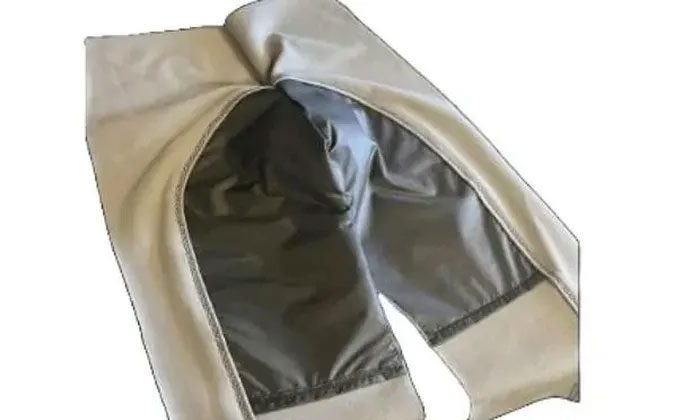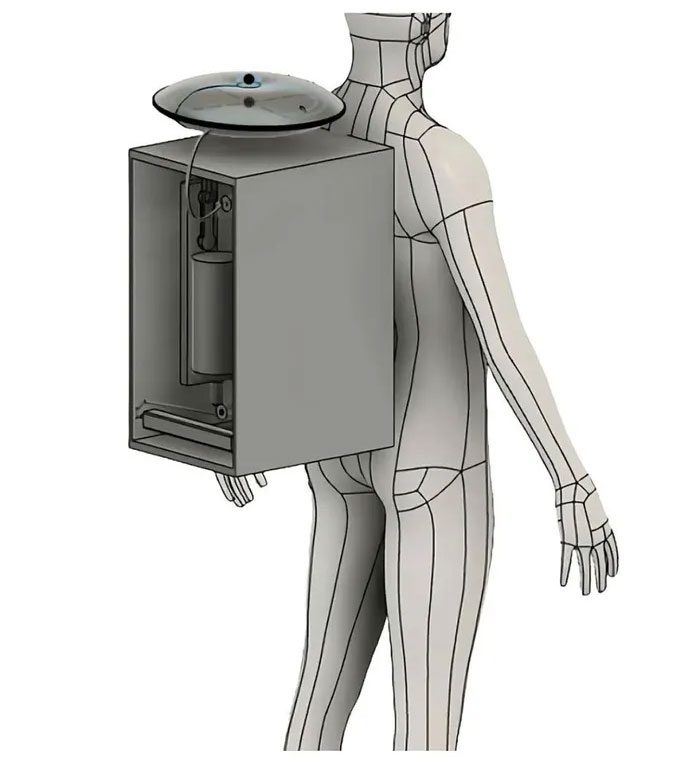Space suits inspired by science fiction that recycle urine into drinking water may enable astronauts to undertake long spacewalks during upcoming lunar explorations.
According to The Guardian, the prototype is modeled after the form-fitting suits (stillsuits) featured in the classic science fiction film Dune. This suit can collect urine, purify it, and return it to the astronaut through a tube within five minutes.

The system includes a molded silicone cup for urine collection, with a multi-layered undergarment inside. (Photo: Claire Walter/The Guardian).
Designers hope this suit can be implemented before the end of this decade in NASA’s Artemis program, which focuses on learning how to live and work for extended periods on another planet.
Sofia Etlin, a researcher at Weill Cornell Medicine and Cornell University, as well as a costume designer, stated: “This design includes an external vacuum tube leading to a convenient reverse osmosis unit, providing a continuous drinking water supply with multiple safety mechanisms to ensure astronaut health.”
NASA is preparing for the Artemis III mission in 2026, aimed at sending a crew to the Moon’s South Pole, with ambitions to launch crewed missions to Mars in the 2030s.
Urine and sweat have been regularly recycled on the International Space Station (ISS), but Etlin emphasized that a similar system is needed for astronauts on exploration missions.
“Astronauts currently only have 1 liter of water available in their drinking pouch within their suits. This amount is insufficient for planned Moonwalks, which may last 10 hours and even up to 24 hours in emergencies,” she noted.
Furthermore, there have been complaints about the current waste management solutions. Astronauts must wear high-absorbency MAG diapers, but these are said to be prone to leaks, uncomfortable, and unsanitary, leading some astronauts to restrict their food and drink intake before spacewalks, while others have reported the risk of urinary tract infections (UTIs).
Etlin, who surveyed astronauts during her research for the new design, remarked: “If you give NASA billions of dollars, do you think they will hold onto these diapers? Leaks from MAG are common. Astronauts say that at a certain point, they can’t tell if it’s urine or sweat anymore. They respond: ‘Yes, I am an astronaut and this is the burden I have to bear.’”
Etlin believes that future commercial astronauts may not share such a steadfast perspective.
Professor Christopher Mason at Weill Cornell Medicine, the lead author of the study, believes that even without a large desert planet like Dune, this suit is still better for astronauts.
The system includes a molded silicone cup for urine collection that fits the genital area, with different shapes and sizes for women and men.
This silicone cup connects to a vacuum pump that activates when humidity is detected, automatically turning on as soon as the astronaut begins to urinate. After collection, the urine is sent to a filtration system where it is recycled into water with an efficiency of 87%. This system uses osmosis to extract water from urine, along with a pump to separate water from salt.
The process of collecting and filtering 500ml of urine takes only five minutes. When deployed, the purified water can be enriched with electrolytes and returned to astronauts as electrolyte-enhanced water.

The system is deemed compact and lightweight enough to be carried on the astronaut’s back. (Photo: Karen Morales/The Guardian).
This system measures 38cm x 23cm x 23cm and weighs about 8kg, considered compact and light enough to be carried on space suits. The team plans to recruit 100 volunteers in New York this fall to test the comfort and functionality of the system.
“Our system can be tested in simulated microgravity conditions, as microgravity is the primary space factor we must consider. These tests will ensure the functionality and safety of the system before it is deployed in actual space missions,” Professor Mason explained.
Details about the prototype were published in the journal Frontiers in Space Technology.

















































